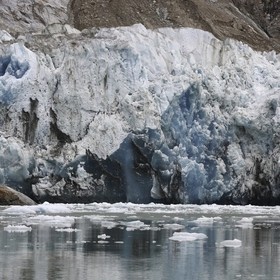

DebbieSalvesen
FollowThe Alaskan Wildlife Conservation Center in Girdwood, Alaska is home to many endangered animals or ones that were orphaned at a young age due to hunting or veh...
Read more
The Alaskan Wildlife Conservation Center in Girdwood, Alaska is home to many endangered animals or ones that were orphaned at a young age due to hunting or vehicular accidents. his gorgeous brown bear has been a resident since he was orphaned many years ago. If you ever get to Alaska, make sure you visit this amazing wildlife center.
Read less
Read less
Views
97
Likes
Awards
Contender in the Photography Awards
Achievement in Originality
Top Pick Award
Staff Favorite
Categories
Same photographer See allBehind The Lens
Discover more photos See all
Behind The Lens
Location
This photo of Hugo was taken at the Alaskan Wildlife Conservation Center in Anchorage, Alaska on our latest trip to the state. If you ever get the opportunity to go to Alaska, GO! Be prepared for wind and rain (even for your camera equipment), but GO!Time
The time of day doesn't matter a lot in Alaska because you can always count on rain, wind, cold, and flat lighting, but what a gorgeous state to experience! I don't use external flash or screens to direct light towards a subject. A bear is not going to wait until you get everything set up, so you have to set the majority of your settings to your surroundings and then, depending on the animal, you will want to adjust slightly to make everything lighter. I also don't make huge adjustments in post-production, especially when the image is wildlife or nature.Lighting
You need to be ready to capture the image so most of your settings will be set for the type of day and landscape. Animals will NOT wait for you to get ready. I also do NOT condone post-production editing beyond the basic techniques like cropping, especially when the image is wildlife, nature or anything doing with our natural resources.Equipment
Handheld 99% of the time, even with this image. I may try to prop myself against a tree for more stability, especially against the wind in Alaska. I do not use flash. I always photograph with Canon.Inspiration
Look into this majestic animal's eyes and you will have your anwer. The most important part of focus is to get the eyes in focus. They are the pathway to the soul. Everything else can be slightly out of focus, but it isn't "the shot" until I capture the detail of the bear's eyes.Editing
I do NOT do much post processing, nor do I agree with its use, especially for contests! The fragility of our natural resources and wildlife is so extreme that when post production changes out the sky or the clouds or removes a person from an image, then what is being judged when it is compared to other images, is one's computer skills and not their photography skills. Be aware of your surroundings when you take a photo. You might want to lean just a little bit to one side or the other to get an unobstructed image. We need to be ambassadors for the health and sustainability of our wildlife and natural resources, so we need to show it as it really appears at the time you take the photo. Leave the litter that covers our waterways or beaches so people are aware of their responsibility to take care of our planet.In my camera bag
I always have 2 Canon bodies, 2-3 glasses of varying ranges, LOTS of cards to capture of the images (make sure they are formatted to your camera before using a new one), multiple charged batteries since you will use more of them in cold, wet climates, a charger for my batteries, and 2 plastic shopping bags that I tear a hole into the bottom of to slip over my camera for protection. I also carry a small notepad and pen to write down where I was and anything special about the area for reference when I go through the images back in my room.Feedback
Be prepared. That is the most important advice I can share. Wild animals, even ones in sanctuaries, are not going to wait for you to get ready. Focus on getting the eyes sharp more than any other feature on an animal, if possible. Always be on alert for "the one" that may pass you by in a second. When my husband and I are traveling, he always drives and I always have two cameras on my lap ready to be picked up and used in a split second. Get out and be part of your surroundings. Turn off your phone, stop talking, and just be still.












































